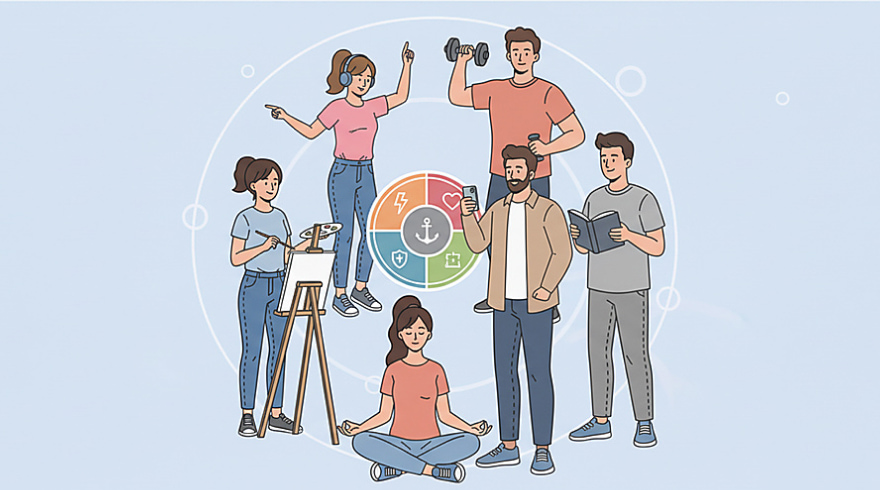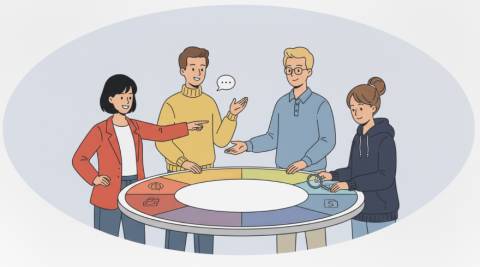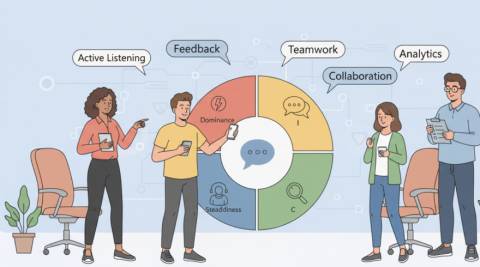Your Complete Guide to Understanding Communication Styles for Free

What Is DISC and Why It Matters for Work and Life
Understanding how people communicate, make decisions, and react under pressure is fundamental to effective collaboration. The DISC framework offers a simple, research-informed lens to decode observable behaviors across Dominance, Influence, Steadiness, and Conscientiousness. Rather than boxing people in, it provides a shared language that clarifies preferences like pace, assertiveness, and attentiveness to details. With that clarity, teams reduce friction, leaders tailor feedback, and individuals choose strategies that fit real situations.
The model shines because it is practical in day-to-day contexts, from sales discovery to conflict navigation. In practice, teams use a variety of tools, and our guide to DISC assessment free options demystifies the process for beginners. By aligning behaviors with intent, you create a bridge between what you mean and how others receive it.
Applying insights takes intention, not jargon, and the payoff shows up in meetings, emails, and project handoffs. When you want a no-cost entry point, consider a curated free DISC assessment test that still respects scientific boundaries. The more you treat the results as a conversation starter, the more your culture benefits.
How the Online Journey Works and Who Should Use It
Most people start with a short questionnaire, answer instinctive choices, and receive a profile summary within minutes. That snapshot highlights likely strengths, hot buttons, and collaboration tips, which you can validate with colleagues. The process feels lightweight, yet it prompts meaningful reflection when paired with real scenarios.
Delivery matters because convenience drives adoption across hybrid workplaces and busy schedules. For remote learners, you can start with a reputable DISC assessment online free pathway that captures preferences without friction. After the report, a brief debrief consolidates insights into everyday language.
Leaders, HR partners, coaches, and individual contributors can all use the instrument to improve dialogue and reduce misinterpretations. Alongside that, many platforms host a trustworthy free DISC assessment online experience that streamlines onboarding. The result is a repeatable, lightweight ritual that supports team health at scale.
- Use the profile to plan 1:1s and performance conversations.
- Map team strengths to project phases for better handoffs.
- Spot stress indicators early and adapt support strategies.
- Align stakeholder communication to decision styles.
Benefits, Use Cases, and Real-World Impact
Practicality is the big advantage: simple language, fast results, and actionable ideas. Teams adopt the vocabulary quickly, which accelerates psychological safety and makes feedback less personal and more constructive. Over time, you’ll notice smoother meetings, clearer roles, and fewer crossed wires as patterns become predictable.
Cost shouldn’t block access to behavioral insight, especially for small teams and solo professionals. Beyond price, a well-designed free online DISC assessment encourages reflection and sparks better one-on-ones. That small investment of time returns in reduced rework and improved morale.
Global organizations also benefit because the framework travels across cultures and industries. If your workplace spans multiple cultures, a concise free online communication style assessment will surface patterns that fuel empathy. With a common map, people approach disagreements as solvable puzzles rather than personal conflicts.
- Sales: Tailor discovery questions to the client’s pace and priorities.
- Operations: Match detail-oriented roles to high-C preferences.
- Product: Balance visionary brainstorming with structured follow-through.
- Service: De-escalate tensions by mirroring customer communication speed.
DISC Styles at a Glance: Traits, Strengths, and Watchouts
It helps to see the four primary styles side by side to understand how they differ in speed, focus, and collaboration preferences. Use this quick reference to decode behaviors during meetings, emails, and cross-functional projects, then adapt your approach accordingly for smoother interactions.
| Style | Core Traits | Strengths | Watchouts | Best Approaches |
|---|---|---|---|---|
| Dominance (D) | Decisive, fast-paced, direct | Action, results, bold moves | Impatience, bluntness | Be brief, focus on outcomes |
| Influence (I) | Enthusiastic, social, persuasive | Inspiration, connection | Over-optimism, follow-through gaps | Share vision, keep it upbeat |
| Steadiness (S) | Calm, supportive, patient | Team harmony, reliability | Resistance to change | Provide stability, invite input |
| Conscientiousness (C) | Analytical, precise, cautious | Quality, accuracy, planning | Over-analysis, rigidity | Offer details, allow time |
Speed is only one dimension, so remember to consider context and goals when interpreting signals from teammates. If you prefer quick starts, choose a concise DISC assessment free online test and pair it with a debrief to convert insights into action. In group settings, you can link observable behaviors to collaborative norms that everyone understands.
Coaches often blend data with facilitated dialogue to reinforce learning loops between sprints or cycles. For coaching sessions, a practical free communication style assessment helps facilitators link behaviors to goals. That combination of clarity and cadence keeps growth sustainable without overwhelming the team.
How to Take the Test and Interpret Your Results With Confidence
Preparation is minimal, but mindset matters: answer honestly, think about typical behavior, and avoid gaming the instrument. Once you receive your profile, annotate the highlights that resonate and flag any outliers for DISCussion. The most valuable insights emerge when you compare notes with peers and map implications to current projects.
Newcomers sometimes worry that labels will limit them, yet the framework is descriptive, not prescriptive. For people new to typologies, a guided free DISC personality assessment can frame the language of strengths and stressors. With that foundation, you can choose tactics that amplify what works and temper what doesn’t.
Momentum depends on translating insights into routines like agenda templates, role charters, and review checklists. If you are simply exploring, a lightweight DISC free assessment offers a risk-free introduction before deeper training. Revisit your profile quarterly and track behavioral experiments to cement progress.
- Capture two “do more” and two “do less” behaviors after your results.
- Align meeting formats to the highest variability of styles present.
- Design feedback prompts that fit each style’s motivation.
- Share a one-page “how to work with me” summary with your team.
FAQ: Common Questions About Free DISC Resources
Is DISC a personality test or a behavioral model?
DISC focuses on observable behavior and communication style, not deep personality or clinical traits. The instrument describes how you tend to act under various conditions, which makes it highly applicable to everyday collaboration. Before workshops, many HR teams pilot a streamlined DISC assessment test free to check fit and readiness.
How accurate are short questionnaires?
Brief assessments can be remarkably useful when they ask clear, behavior-based questions and provide nuanced feedback. Accuracy improves when you answer based on typical behavior rather than aspirational choices. After calibration, some practitioners archive a structured free DISC profile assessment as part of the learning record.
Can teams use DISC without a facilitator?
Yes, many teams start independently by sharing profiles and creating simple norms for meetings and feedback. A facilitator can accelerate outcomes, but peer-led sessions are effective when paired with real scenarios and clear follow-ups.
Will a profile change over time?
Core tendencies are fairly stable, though context, role demands, and stress can shift behaviors. Re-assessing annually or after major changes helps you validate current patterns and refresh shared agreements.
How should leaders roll this out across departments?
Begin with a pilot group, document best practices, and scale through champions who can coach others. Provide short guides, schedule debriefs, and integrate insights into existing rituals like project kickoffs and retrospectives.
Latest News



